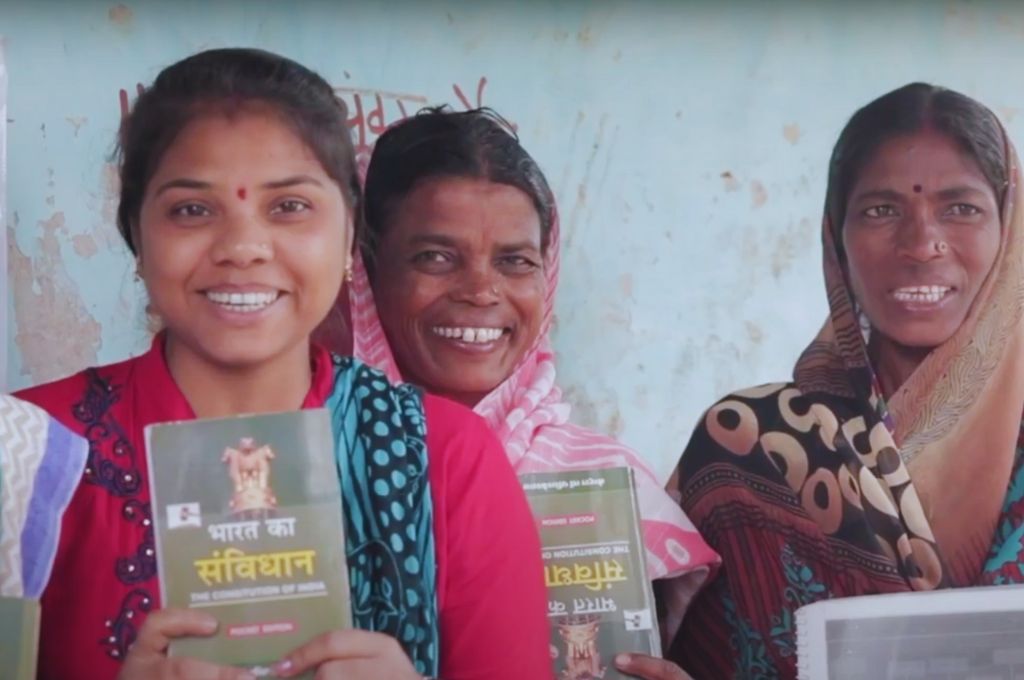Never before have we seen such a large humanitarian, health, and economic crisis all at once. Particularly for the social sector, there is a new normal, and the next year or two is going to be a crucial time for us to think about how things could be different.
But before we look ahead, it’s also important to examine the response of civil society, as well as the government, to people’s needs during the lockdown—particularly the poor and most vulnerable. Though the government took a while to announce its 20 lakh crore relief package, it is evident from its provisions that it aimed to serve the bottom half of the socio-economic pyramid. What it failed to include, however, was any mention of the role of civil society workers who have been at the frontlines from the start of the lockdown, addressing issues of food, shelter, and migration. In fact, in my view, if it were not for the civil society sector, we would be facing an even larger crisis right now.
While government efforts in recent years, whether towards rural electrification or building roads, have made a positive difference in rural India, the crisis has underlined the fact that the last mile is still broken. People have been strapped for cash, and in many cases, have not been able to access food from the government either. We are seeing that it is civil society that is stepping in to fill this void, despite the progress that various government programmes have made in the last decade.
The government needs to view civil society as a partner
Coming out of this crisis, the government needs to think closely about what it needs to do. For me, the first area to think about is how the government can develop a more trusting partnership with civil society organisations.
The government has also maintained a largely transactional relationship with nonprofits.
Historically, the relationship between the two has been fraught, in large part due to the Licence Raj that operates with regards to the social sector, the onerous reporting requirements, and the uncertainty around whether certain applications for registration will be approved or not. The government has also maintained a largely transactional relationship with nonprofits, where it seeks their support on a one-off basis. Instead, the government needs to move away from these approaches towards a more collaborative model, recognising that the social sector has proven experience and evidence about what works and what doesn’t.
Over the last 2-3 years, we have started to see central, state, and district governments moving in this direction, and actively reaching out to civil society organisations for support. Nonprofits are now more involved with the government at the policy and implementation level (though this has happened in a fragmented way). Coming out of the crisis, we have an opportunity to take this a step further and think about bigger and bolder reforms where both the government and civil society come together and put their collective weight behind them.
Creating large-scale, national missions in health and education—much bigger than what we have now—is one such bold reform. There is no doubt that economic recovery and growth are the need of the hour. But alongside this, we also need to be looking at specific sectors, including health, education, labour, and land use, and asking ourselves how we can improve outcomes on a number of social indicators. The rapid growth of East Asian economies such as South Korea, Taiwan, and Vietnam over the last few decades has shown us that investing in human capital is key to economic growth. And so, we need to focus on improving health and education in India, sooner rather than later.

In my view, the social sector in India is not well-positioned to pull through a crisis such as this one. | Picture courtesy: Pixabay
There will be severe budgetary constraints with the impact of COVID-19. But recognising these resource constraints may also push the government to look at civil society as a partner, and say: We are going to launch these missions, how can we do this together?
What role can philanthropy play in securing the future of civil society?
In addition to changing the government’s mindset towards civil society, the second thing we need to think about is ensuring the sustainability of the sector. Right now, COVID-19 relief is attracting a significant portion of resources, and consequently, many nonprofits who may need funds for other programmes or causes are facing a severe liquidity crisis. With budgets being cut and donor commitments evaporating, the sector is facing an Armageddon right now. Many organisations are cutting programmes and starting to pull back precisely when they are needed the most.
In my view, the social sector in India is not well-positioned to pull through a crisis such as this one. As donors, we need to start having conversations about how we can strengthen the ecosystem and create a financial buffer for organisations, so they can survive and continue to serve their communities during times of crisis. It’s quite surprising to me that we haven’t done so already, given the importance of nonprofit work and their limited resources.
We need to remember that philanthropic capital is only a drop in the bucket compared to government spending.
At the same time, we need to remember that philanthropic capital is only a drop in the bucket compared to government spending. Even if we were to develop new, innovative funding models, it is unlikely that the quantum of funding for nonprofits will increase exponentially in the near-term. So, the question then becomes: How can we support nonprofits to increase their impact, with the same funding models?
One way of optimising the funding available is to invest in public goods that require a small amount of money, but can benefit the sector at-large. An example of this is the Annual Status of Education Report (ASER), created by Pratham. It isn’t costly to create and implement the survey, and the report is a valuable public good that clearly holds a mirror to the state of education in the country and the learning crisis we currently face.
Another approach is to work as a technical partner to the government. Instead of nonprofits running their own programmes, they can leverage their wealth of experience, evidence, and technological tools to support government programmes. As budgets shrink and nonprofits look to cut down on their programmes, this approach presents a viable alternative to the current mode of functioning, in which organisations handle service delivery themselves.
This coming together of civil society and the government becomes particularly important in the case of public goods such as health and education, where a purely for-profit approach is unlikely to work. Markets do have their role to play, but not necessarily in the delivery of public goods, where they often exclude the most marginalised. Part of the reason why the civil society sector exists is because we know that markets don’t work and because there are big gaps to be filled. Therefore, for funders, it may make sense to work with other funding partners to overlay government funding and increase its efficiency and effectiveness.
The pandemic has thrown up a lot of challenges for nonprofit organisations, but it has also created an opportunity for us to re-examine how we can build resilience within the sector and how we can work together with the government towards a more equitable partnership. Doing this will not be easy, but taking steps in this direction is key to the long-term survival of the social sector in India.
This piece has been edited from a panel discussion held at charcha2020, where Ashish Dhawan spoke about the future of the social sector, beyond the pandemic.




